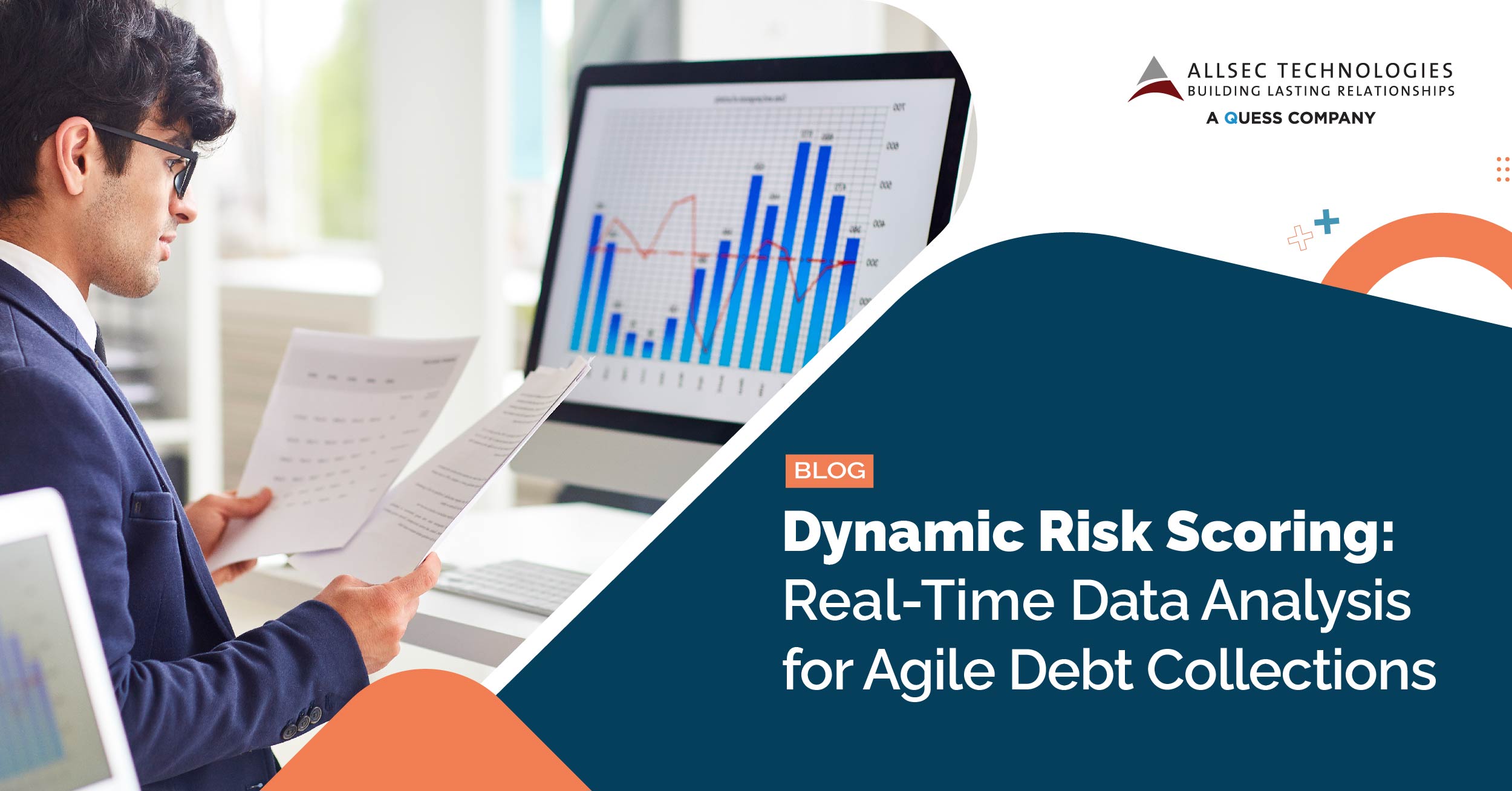
How Dynamic Risk Scoring (DRS) transforms debt collections
Traditional risk scoring, with its static snapshots, often leaves collectors in the dark, unable to adapt to the ever-evolving realities of debtor finances. Missed opportunities for early intervention, wasted resources on low-potential accounts, and strained customer relationships become frustrating roadblocks. But what if you could unlock a dynamic map, constantly revealing new insights and illuminating the most efficient path to successful recovery?
Beyond Static Snapshots: Dynamic Risk Scoring
Dynamic risk scoring (DRS) emerges as a game-changer by leveraging real-time data analysi. It offers continuous assessment of debtor risk, empowering agile and responsive collection strategies. Gone are the days of solely relying on historical data; now, instant access to transaction patterns, external insights, and even behavioral cues paints a detailed portrait of each debtor’s current situation and repayment potential. It’s a complete change in perspective, allowing collectors to anticipate challenges, personalize approaches, and maximize recovery while fostering positive customer relationships.
A Closer Look Into Dynamic Data
Unlike static models, DRS incorporates a wider range of data sources, enriching the understanding of each debtor. Transaction data delves into recent payment behavior, spending patterns, and account activity, offering a real-time gauge of financial health. External data expands the view by including employment status, credit bureau updates, and even public records (with consent). Behavioral data adds another layer, considering interactions with collection attempts, communication channels used, and response times to understand engagement levels.
By continuously analyzing this dynamic data stream, DRS models automatically update risk scores in real-time. This empowers debt collectors to move beyond static snapshots and make informed decisions based on the latest information. Early intervention becomes possible, identifying high-risk debtors sooner and enabling timely, targeted collection efforts before accounts become delinquent. Personalized approaches can be tailored based on individual risk profiles, fostering trust and understanding with debtors. Optimized resource allocation focuses efforts on high-value recoveries, avoiding wasted effort on low-potential accounts. Improved compliance is ensured through real-time monitoring that adheres to regulations and ethical collection practices.
Collaboration and Responsible Implementation
Successful implementation of DRS requires collaboration with experienced partners. These partners should offer advanced analytics platforms with robust infrastructure and algorithms to handle diverse data and generate accurate risk scores. Data security and privacy are paramount, so strict adherence to data protection regulations and ethical data usage practices is crucial. Customizable dashboards and reporting provide real-time insights into portfolio performance and individual debtor analysis. Close communication and partnership with transparent and collaborative agencies help align objectives and optimize strategies.
Remember, responsible implementation is key. Data availability and quality are essential for reliable risk assessments, so access to accurate and diverse data sources is crucial. Partnering with an agency with expertise in building and maintaining models specific to your needs ensures effective model development and maintenance. Finally, prioritize fair treatment of debtors by implementing responsible AI practices and ensuring transparency in model development through ethical considerations.
Embracing The Future: The Transformation At Hand
Dynamic risk scoring is a transformation in debt collection. By embracing this technology, agencies can unlock agility, optimize resources, and ultimately recover more debt while fostering positive customer relationships. At Allsec, we prioritize ethical considerations that allow you to address the challenges and position your agency for success in the years to come.


